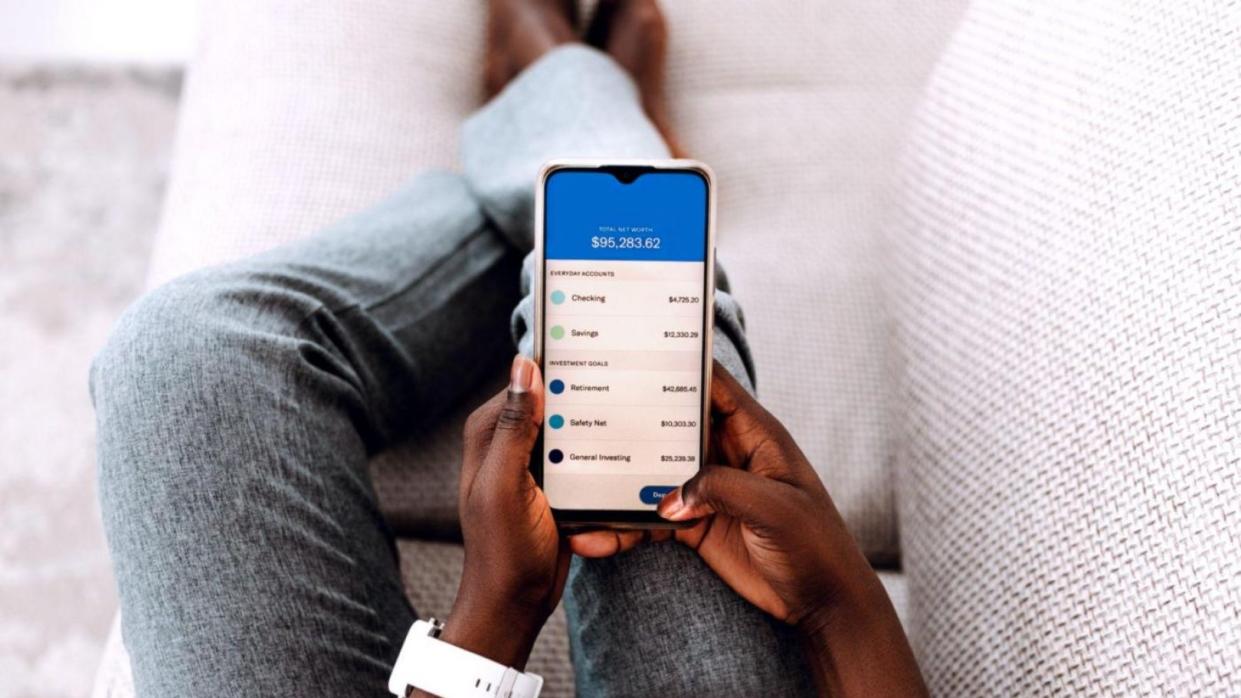How to start investing right now — no expensive broker or expertise required

This article is brought to you by Bankrate and created by In The Know’s commerce team. If you decide to purchase products through the links below, we may receive a commission. Pricing and availability are subject to change.
When it comes to money, everyone is a bit on edge these days. With the constant talk of inflation, a recession, rising interest rates, the ups and downs of the stock market and more, many people are (understandably) worried.
Given the current financial climate, your initial reaction may be to just hold on to any spare cash you have. While it may offer some peace of mind, hoarding money in a regular checking account isn’t really a great option if you’re looking for growth. Instead, many experts still recommend investing your extra dough.
Now you may be thinking, “I’m not an investing expert,” or “I’m not a millionaire, and I don’t have enough money to invest,” but that shouldn’t deter you. Every day, ordinary folks like you and me can and should reap the benefits that investing wisely brings.
To help you get started, Brian Baker, an investing reporter at Bankrate.com, shared his expert insight on how to start investing right now — no expensive broker or expertise required.
Make sure you’re ready to start investing.
Before you start allocating any of your monthly income to investments, it’s important to evaluate honestly if you’re in a position to do that. Baker says it’s wise to have high-interest debt paid off before directing your cash to investments. He also agrees with many of the experts who recommend building up an emergency fund before investing your money. When it comes to an emergency fund, the gold standard is to have three to six months’ worth of your monthly expenses set aside in case of an unexpected medical bill, home or car repair, or some other surprise cost pops up.
Set realistic expectations for your investments.
If you go into investing thinking you’re going to get rich overnight, you’re in for a rude awakening. Investing is a long-term commitment, so it’s really important to be specific about your goals and your timeline and use that information to deiced which investments make the most sense for you.
For example, if you’re saving for a down payment on a house, fixed income investments and money market funds are probably your best option.
“If you don’t have money to lose or if you think you’re going to need the money that you’re planning to invest in the next five years, the stock market is probably not the best place for that money,” Baker says.
On the other hand, if you’re saving for a retirement that is decades away, Baker says you can focus your investments more on the stock market because you’ll have time to make up for any large swings or losses that happen in the short term.
Understand your employer’s investment options.
Once you’ve decided that you’re in a good financial position to start investing, the easiest way to get started is through your employer. These days, many companies incentivize employees to participate in their workplace retirement plan by matching contributions up to a certain percentage. When you’re ready to start your investment journey, Baker recommends checking with the HR administrator at your job to see if they offer a 401(k) match. If so, take advantage of this by contributing the max that your employer will match. It’s like “free money,” Baker says. Who doesn’t want that?
One important thing to note about employer contributions to your 401(k): They often have a vesting period. That means if you leave the company before the contributions have vested, that money is no longer yours. Be sure to check with your plan administrator so you understand this time frame and can plan any job changes accordingly.
Invest on your own with a robo-advisor.
If your company doesn’t offer a 401(k) match or you just want to start investing on your own, Baker suggests looking into robo-advisor.
“They function as a kind of financial advisor, but at a much lower cost,” Baker explains. To get started, head to Bankrate to read up on the best robo-advisors. Once you’ve decided on one, you’ll create an account, which will involve answering questions about your investing goals, risk tolerance and timeline. From there, the robo-advisor will suggest a few different portfolio options for you to begin investing with.
Folks new to investing should also know that the two options presented above don’t have to be an either-or decision. Baker says, “If you have the money to do both, the more you’re able to save and invest, the higher the pot of money you’re going to end up with. If you have excess savings beyond what you’re able to contribute to a 401(k) plan, saving more through a robo-advisor or IRA is another great way to go.”
If you liked this story, check out how to get back on track if you’re buried in debt.
More from In The Know:
OK, once and for all, what is crypto and should you have some?
Best cryptocurrency trading apps
Time is on your side: A guide for millennials to start investing with confidence
14 first-time homebuyer mistakes to avoid
The post How to start investing right now — no expensive broker or expertise required appeared first on In The Know.

